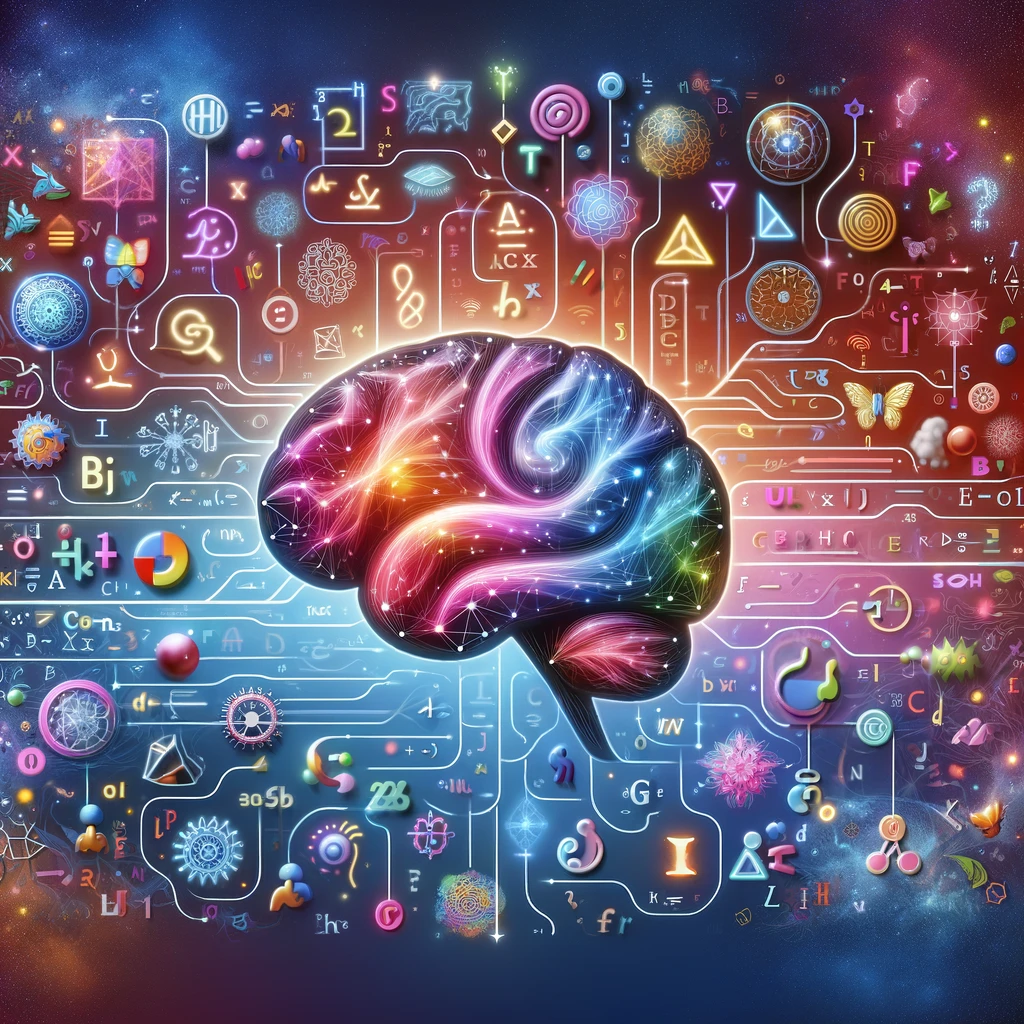
Language and the Mind: How Symbols, Syntax, and Semantics Shape Cognitive Processes
Introduction
Language is not merely a communication tool; it is a powerful cognitive framework that shapes how we perceive, think, and interact with the world. Its role extends beyond words and grammar, influencing memory, perception, attention, emotion, and reasoning. This article explores the interplay of symbols, syntax, and semantics in cognitive processes while integrating cultural perspectives, technological transformations, and practical applications. By synthesizing cutting-edge research and cross-cultural insights, we aim to understand language’s evolving role in human cognition.
💡 Key Questions We'll Address
- How does language influence cognitive processes across domains?
- What role does culture play in shaping linguistic cognition?
- How is modern technology transforming our relationship with language?
- What practical benefits arise from these insights into language and cognition?
The Building Blocks of Language: Symbols, Syntax, and Semantics
Foundational Components
Language operates through three primary pillars:
- Symbols:
- Abstract representations that form the foundation of language.
- Arbitrary nature enables cultural variation, such as how different languages conceptualize abstract ideas (e.g., "freedom" vs. "collective responsibility").
- Syntax:
- Rules governing word arrangement to create meaning.
- Advances in linguistic theory (e.g., Chomsky's universal grammar) suggest shared underlying structures across languages, though sentence organization varies dramatically.
- Semantics:
- The layer of meaning derived from symbols and structure.
- Context-dependent interpretations often reveal cultural and personal nuances.
📚 Expanded Insight: The layered interaction of phonology, morphology, and pragmatics reflects the richness of linguistic systems. For instance, understanding how intonation alters meaning (phonology) or how words combine (morphology) deepens our comprehension of syntax and semantics.
Language and Perception: A Bidirectional Relationship
The Sapir-Whorf Hypothesis in Context
Modern research nuances the idea that language determines thought. Instead, it highlights language as an influencer of perception:
- Color Perception: Studies reveal differences in color discrimination influenced by linguistic labels, like the faster differentiation of light and dark blues by Russian speakers compared to English speakers.
- Spatial Cognition: Guugu Yimithirr speakers' use of cardinal directions enhances spatial awareness and orientation, underscoring how language structures cognitive strategies.
Cultural Variations in Perception
Language encodes and influences perception across cultures:
- Silence in Japanese: Words for silence reveal cultural attitudes toward its emotional and situational significance.
- Inuit Terminology for Snow: Linguistic precision aligns with environmental adaptation.
Digital Age Dynamics
Technological shifts are redefining perception through linguistic innovation:
- Emoji bridge visual and linguistic expression, influencing how emotions are conveyed.
- Social media has created a hybrid visual-verbal language, affecting tone perception and attention patterns.
Language Development and Cognitive Growth
Stages of Acquisition
- Critical Periods: Key milestones from infancy to early childhood, such as phoneme discrimination by six months and rapid grammar acquisition by age five.
- Bilingual Development: Evidence of enhanced executive function and cognitive flexibility due to managing multiple linguistic systems.
Cognitive Impacts of Language Disorders
Disorders like Specific Language Impairment (SLI) and dyslexia disrupt typical development, providing insights into language's role in cognitive organization.
🔬 Research Highlight: A 2023 study demonstrated that bilingual children show stronger connectivity between language and executive function brain networks, suggesting advantages in multitasking and adaptability.
Memory and Language: An Integrated System
Linguistic Memory Types
- Semantic Memory:
- Encodes cultural knowledge and conceptual networks.
- Plays a pivotal role in expert domains like medicine or engineering, where precise terminology organizes thought.
- Episodic Memory:
- Relies on narrative frameworks for autobiographical recall.
- Differences in storytelling traditions shape how events are remembered cross-culturally.
Practical Memory Techniques
- Narrative Learning: Embedding knowledge into stories enhances retention.
- Mnemonics: Associating new vocabulary with vivid imagery or familiar patterns.
Attention and Language in the Digital Age
Attention Patterns and Challenges
- Social Media Impact: Rapid scrolling diminishes sustained focus but fosters micro-communication skills.
- Multitasking: Digital environments demand quick linguistic shifts, training certain cognitive processes while fragmenting others.
Cultural Influences on Attention
Educational and contemplative practices across cultures illustrate varying attention patterns, from mindfulness techniques in Eastern traditions to fast-paced debate in Western education.
Emotional Intelligence Through Language
Affect Labeling and Regulation
Neuroscience highlights how language influences emotional processing:
- Labeling emotions reduces amygdala activity, increasing prefrontal engagement for better regulation.
Cultural Concepts of Emotion
Language shapes unique emotional experiences:
- "Amae" (Japanese): A sense of comfortable dependency.
- "Saudade" (Portuguese): A melancholic longing.
Practical Applications
- Therapeutic Tools: Emotion naming and storytelling aid mental health.
- Social-Emotional Learning: Classroom discussions improve emotional literacy and conflict resolution.
Language in the Digital Era
Modern Communication Trends
- Emoji, memes, and hashtags form new linguistic genres that blend visual and verbal elements.
- AI-driven chatbots and translation tools are transforming global communication, introducing new challenges in maintaining nuance and context.
Future Directions
Advances in AI language models, brain-computer interfaces, and augmented reality promise to reshape how language is used and experienced, blending human and machine communication.
Practical Applications and Future Research
Applications for Educators
- Activities: Implement games that foster cross-linguistic awareness and critical thinking.
- Digital Literacy: Equip students with skills to critically evaluate online information.
Future Research Areas
- Neurolinguistic Studies: Uncover deeper links between language networks and cognitive functions.
- AI and Cross-Cultural Studies: Investigate how emerging technologies adapt to cultural linguistic frameworks.
Conclusion
Language is a dynamic cognitive tool shaping how we think, feel, and interact. As digital and cultural landscapes evolve, so does language’s role, presenting new opportunities to harness its power for education, emotional intelligence, and human connection. By continuing to explore its intersections with technology, memory, and perception, we unlock deeper insights into what it means to be human.